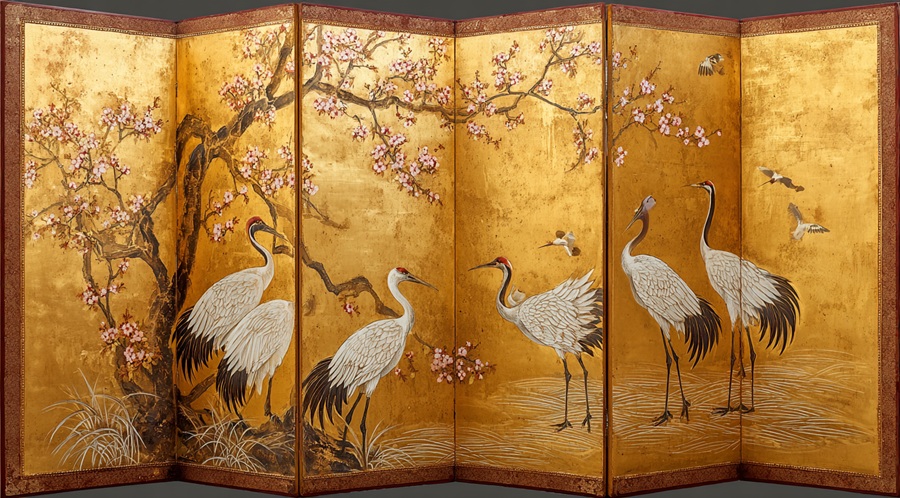
Folding screen
Japanese Name:
屏風
Romaji Name:
byoubu
Description
↓↓
A byōbu is a traditional Japanese folding screen, often used as both a functional and decorative piece of furniture. The name "byōbu" literally means "wind wall" in Japanese, referencing its role in protecting spaces from drafts, but over time, it has evolved into an important part of Japanese interior design and art.
History
↓↓
Byōbu are traditional Japanese folding screens used to partition space and decorate interiors.
They originated in China and were introduced to Japan around the 7th–8th century, initially for court use.
By the Heian period (8th–12th century), they became popular among aristocrats for both functional and aesthetic purposes.
By the Heian period (8th–12th century), they became popular among aristocrats for both functional and aesthetic purposes.
During the Edo period (17th–19th century), byōbu were widely used in homes, temples, and castles, often featuring elaborate paintings and calligraphy.
They served both practical roles—dividing rooms and blocking drafts—and artistic roles as displays of culture and wealth.
Today, byōbu remain appreciated as decorative art and cultural heritage, combining functionality with traditional Japanese aesthetics.